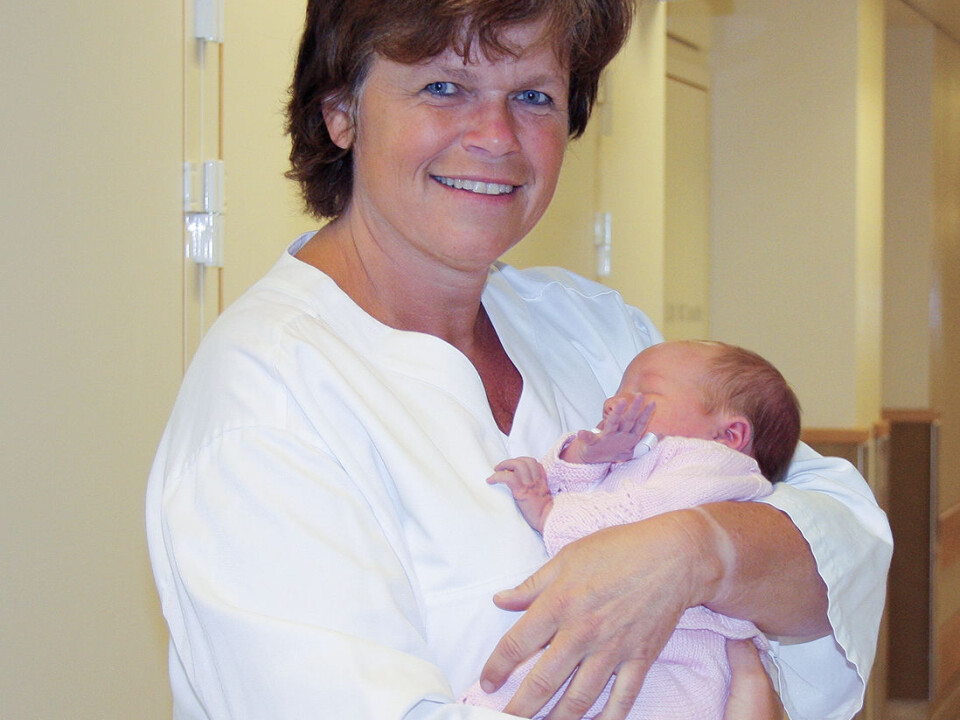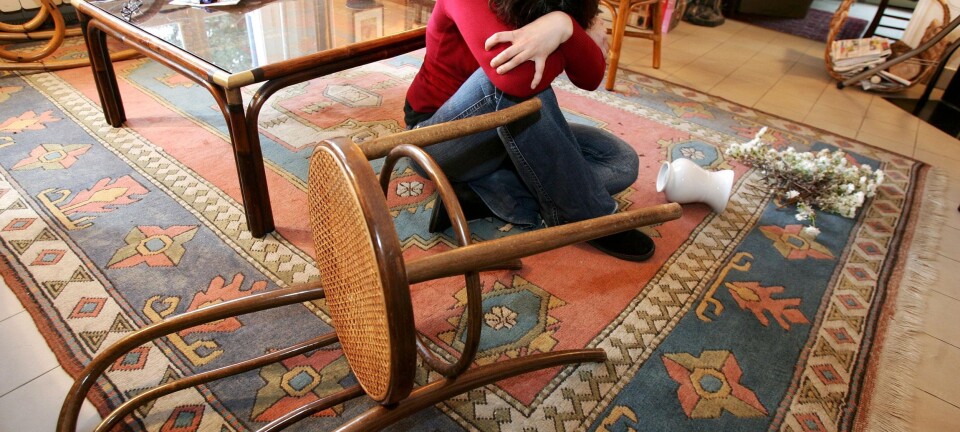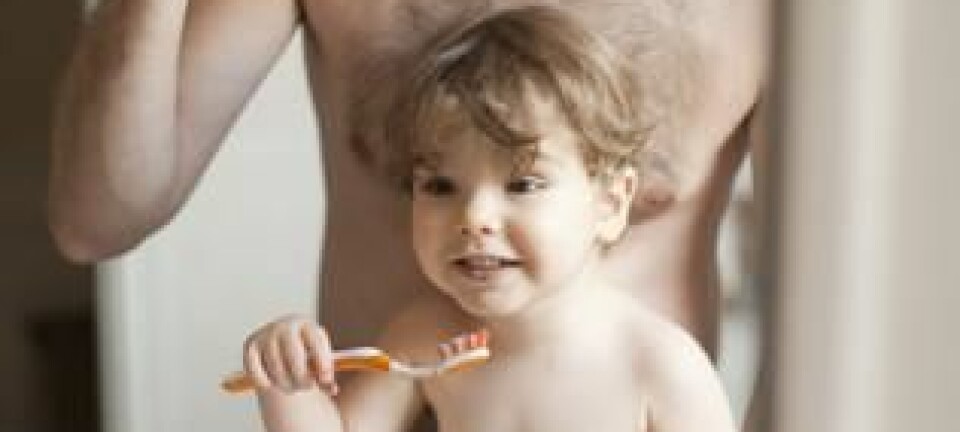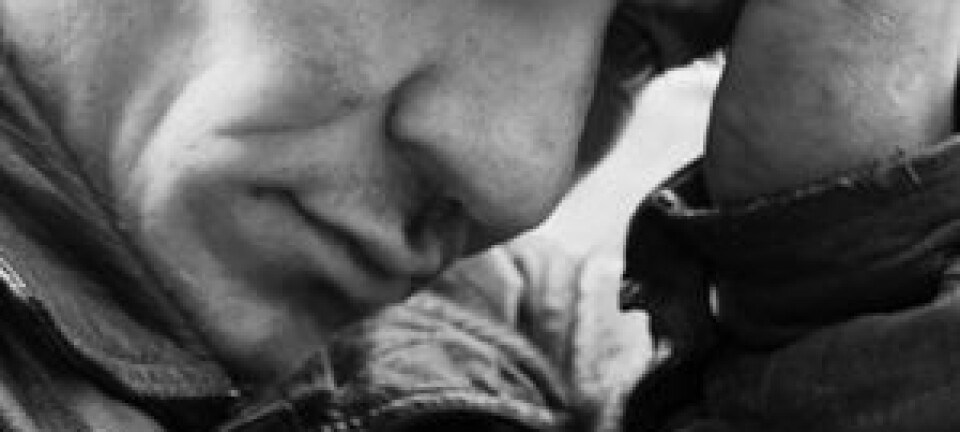An article from Buskerud and Vestfold University College (HBV)
Supportive mums important for pregnant victims of partner violence
Having a helpful mother is important for most women who themselves become pregnant. She is, however, even more essential for victims of partner violence, researcher believes.
Denne artikkelen er over ti år gammel og kan inneholde utdatert informasjon.
Kristin Håland has conducted research on women and men who experiences violence during pregnancy: Women as victims of violence, men as perpetrators.
Håland is a research fellow in health sciences at Buskerud and Vestfold University College who also practices as a midwife.
She wants to provide insight into the lives of women and men living in a violent situation around the time of birth. And she is interested in how the community can contribute to improving the situation of the adult and newborn child.
One of the main questions she has been asking is: Which people are the most important to women who are victims of intimate partner violence during pregnancy?
Mum’s honesty
It turns out that two persons are particularly important: The child, who is the power and motivation for change, and the woman’s mother, who represents continuity and honesty.
Håland says the findings suggest that we should think differently about what kind of support the community provides to pregnant women.
“The woman's mother can be an important person in antenatal care, and perhaps she should be invited as a support person,” says Håland.
The vulnerable child
Children’s’ welfare is her main concern. She stresses the importance of reaching children when they are very young.

“Pregnancy is the earliest time we can reach the child,” the midwife points out.
“The youngest children are the most vulnerable. They cannot run away from the situation, and they lack the conceptual framework to understand and process the fear when they are living with domestic violence.”
Hålands interest came as she worked in a project where midwives systematically asked pregnant women if they were or had been victims of violence.
“Initially, I was interested in finding out how these women experienced their situation with pregnancy and violence, and what kind of help and support they needed,” she says.
Later, she looked into how the upcoming fathers experienced the same situation.
Support and risk
Håland says key support people can represent both support and risk.
“If the pregnant woman is not understood and treated with respect, it can ruin friendships and isolate the woman further. At the same time there is an opportunity for rescue, as she needs other people to be present, and able to withstand her frustrations and ambivalence, in order to change her life situation.”
The women experienced their mothers as important, despite the fact that some of the women described a childhood of neglect, where they had had to take care of younger siblings, because their mother was not present with care.
“Mum is always important when women themselves become mothers. For abused women, the mother become even more important,” says Håland.
“What often happen to abused women, is that their network shrinks, they feel lonely,” she adds.
No previous Norwegian research
According to Håland, there is little research on women's experience of violence during pregnancy, and no studies have been conducted in Norway. Nor did Håland find any research that examines men's experience of pregnancy and violence.
Some of the men who are violent towards their pregnant partner experience a turning point when the child is born. Then the child takes an important role in motivating for change
“Looking into the child's face, affects the violent father,” Håland says.
“He sees his own vulnerability, the child within himself. The child who in many cases have experienced violence from his father earlier on.”
“I was very similar to my father”
One of the men in the study says: “Suddenly she's pregnant, you know, and it suddenly comes to me, my whole life. There is a sudden end to my life, you know, and now I'm supposed to be with her the rest of my life.”
Another says: “Because I realized that I was very similar to my father ... when he ... I can see that now. How fast I get grumpy and angry, and how little it takes to make me annoyed.”
Protection, shame and guilt
The pregnancy is a daunting transition, affecting men's sense of their own fathers. It's about being forced to grow up and take responsibility, according to the researcher.
“Men are struggling to gain control over their own thoughts and actions.”
“Being a father is all about protecting the child. It also includes feelings of shame and guilt, while they feel that someone loves them anyway. Their own story is woven together from past, present and future,” she says.
Need for change
Håland believes there is a need for change in the support the community provides to abused pregnant women and their violent men, and has the following advice:
• Midwives and doctors should exercise extra caution in contact with the pregnant woman. She wears her history and experiences in her body.
• Her mother may be an important person in antenatal care, and perhaps she should be invited to enter as a support person.
• Help for abused pregnant women should be organized so that the woman do not have to run around and ask for help, but get a coordinator who can help her.
• Men who commit violence should be helped to sort and define their feelings. The violent man should be offered consultations, and help to figure out his new role as a father.
• Some men want to talk to the midwife alone - about expectations concerning his new role.
• Both women and men want to be seen and met as complex human beings, not as victims of violence or as violent. It is important that people in the support system also see their strengths and merits.
------------
Read the Norwegian version of this article at forskning.no



































